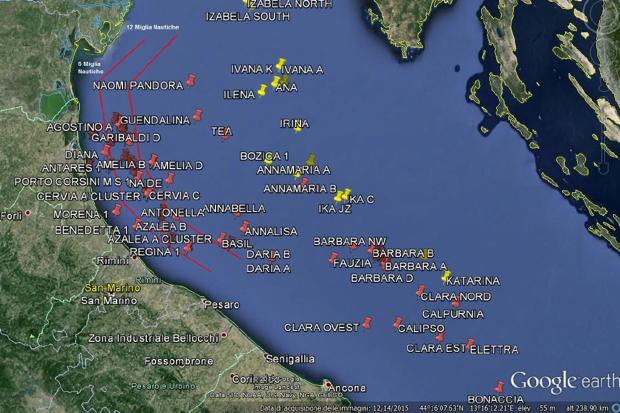As climate fanatism creates more problems than solutions, Italy extends gas contracts to address supply shortages due to conflict with Russia.
After several interruptions, Gazprom resumed gas deliveries to Italy through Austrian territory.
The Russian energy giant posted a brief comment on its Telegram account, saying, “Russian gas transport through the territory of Austria has resumed.”
Italy receives Russian gas from Siberia via the pipeline through Ukraine, which is connected to “Trans Austria Gas” controlled by the Italian company Snam, which brings it into the country via the Alpine town of Tarvisio.

Historically, Italy has been heavily dependent on energy imports (nearly 90 percent), and until the conflict with Ukraine erupted on Feb. 24, 40 percent of it came from Russia.
Since the war began, Rome has embarked on a diversification plan that has resulted in Algeria, a North African country to which it is linked by another gas pipeline, replacing Russia as the leading gas supplier to the Italian economy.
In her first speech after the election results, Giorgia Meloni said in Milan that fighting rising energy prices was among her most urgent goals.
“I am in constant contact with the outgoing government, which is in a very complex negotiation to find solutions at the European level,” she said.
The Roman leader also said the Italian economy needed to be less dependent on external suppliers.
“We need to address the issue of supply chains seriously. Today we realized that we depend on the whole world for everything,” she said, adding that Rome and Brussels should “rethink” their strategy on the matter.
Unlike government leaders who submit to the progressive agenda and climate fundamentalism, Meloni says he will not accept energy alternatives that lead to unaffordable prices for the Italian population.
In such decisions, a distinction can be made between politicians who are subject to supranational agendas and politicians who are committed to the will and welfare of their people.
Despite the reopening of the pipeline, Italy is looking for alternatives to Russian gas.
Algeria is an excellent opportunity for Italy and Europe as an alternative to Russia.
Italian energy company ENI is progressing on numerous new projects with the North African country.
In June this year, QatarEnergy (the Arab country’s leading energy company) signed agreements with ENI that make QatarEnergy the second partner in the world’s most extensive LNG expansion program, having consolidated its leading role as the main exporter.
This means that Rome will have access to Qatar’s 25.6 billion cubic meters (third largest reserve in the world) and Algeria’s 4.5 billion cubic meters (tenth largest reserve), giving it a similar production network to Iran’s (second largest reserve).
Italy consumes more than 75 billion cubic meters of natural gas annually, but domestic production is only 3 to 4 billion cubic meters.
The country currently has about 1,300 producing wells. Still, many of them are inactive as the advancing climate agenda has imposed many bureaucratic restrictions and led to the collapse of domestic hydrocarbon production.
Italy’s new right-wing government is considering lifting environmental regulations to reactivate many idle wells and increase domestic production.
THE GREEN AGENDA AND ITS ENERGY POLICY
Italy’s main gas fields are located in the Adriatic Sea, particularly off the coasts of Emilia Romagna, Marche, Abruzzo, and Molise.
MISE estimates that there are 350 billion cubic meters of natural gas in the Italian subsoil, including confirmed and potential reserves.
Nomisma Energia estimates that about 50 platforms could be reactivated from Lidi Ferraresi to Marche, providing about 3 billion cubic meters of gas annually.
The “Plan has slowed down production for the Sustainable Energy Transition in the Apt Zones” (PiTESAI).
This program, launched by the first government of Socialist Giuseppe Conte in 2019 and finally approved by Draghi’s government in February 2022, aimed to limit drilling.
Thirty years ago, Italy produced up to 20 billion cubic meters of natural gas annually, but today the figure is less than 20 percent.
THE UPPER ADRIATIC RESERVE THAT CROATIA IS DEVELOPING
While Italy has decided to develop infrastructure for LNG imports instead of adding projects to its production, Croatia continues to expand gas production in the Adriatic Sea, as this area has the largest natural gas reserves that the Italians could exploit but do not.
According to calculations by Nomisma Energia, the reserves are about 40 billion cubic meters, located about 40 kilometers off the coast of Venice.
Since the mid-1990s, Rome has blocked mining and research activities in the Adriatic.
As a result, domestic production fell from 20.6 billion cubic meters in 1994 to 4.4 billion cubic meters in 2020, while consumption continued to rise.
Croatian oil and gas company INA launched a nearly 266-million-euro campaign for new wells and platforms this September, focusing mainly on fields in the northern Adriatic, where it has no competition because mining activities in the area are banned in Italy as a risk area for sinkholes.
The new Prime Minister, Giorgia Meloni, believes it should not be a foreign country that exploits its deposits, especially in times of energy shortage.
The defense of the national interest must include the removal of all restrictions created by successive progressive governments.

